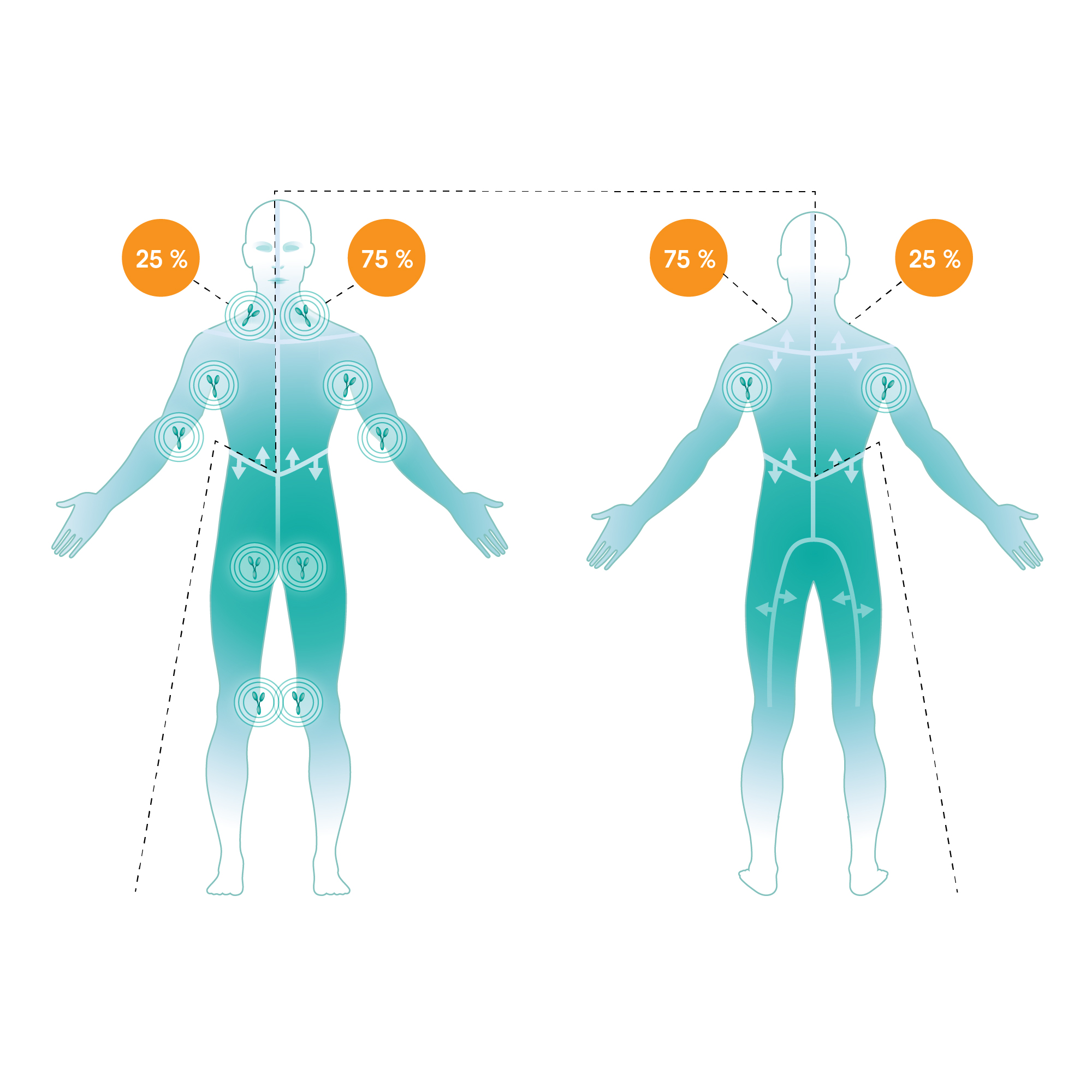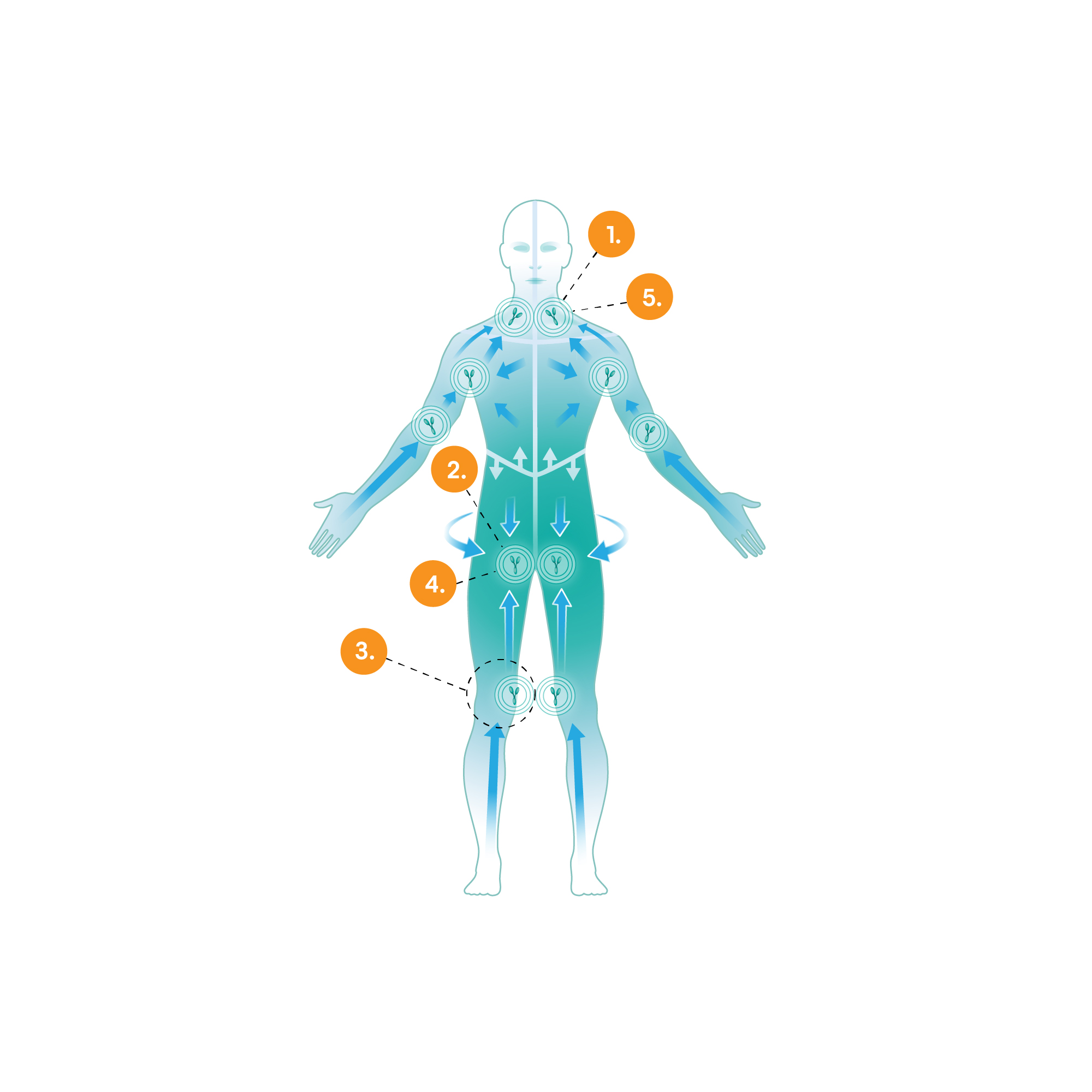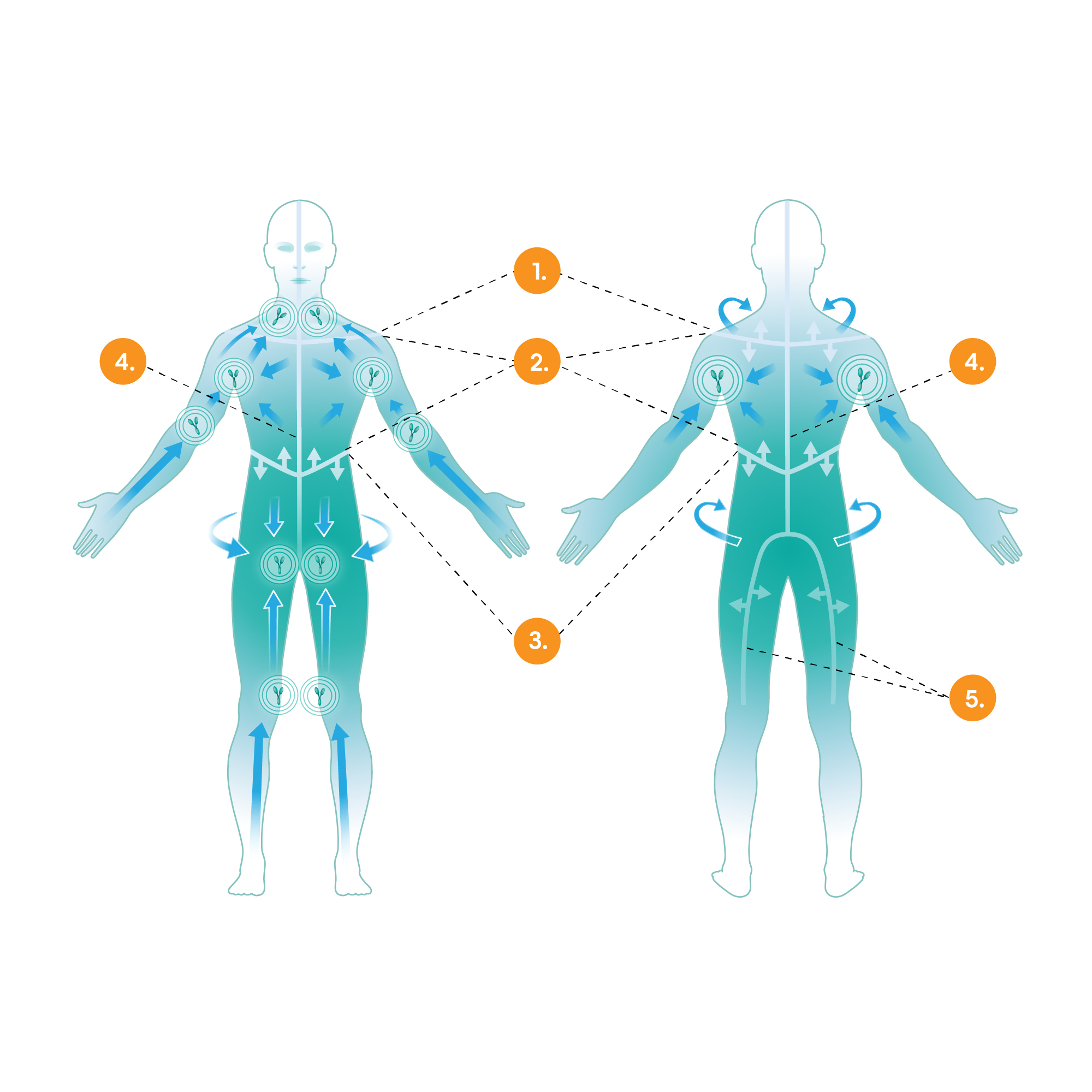These general instructions have been divided into two sections. The first section includes instructions for handling and applying the tape. The second section explains where to apply 6D Tape on the body, how to use it for therapy, and when not to use it.
Detailed instructions have also been provided for selected body parts.
6D Tape for treating tennis and golfer´s elbow
6D Tape for treating scars and swelling after breast operation
6D Tape for treating carpal tunnel and De Quervain syndrome
You can sign up for remote training to receive more information about treatment and view the training video afterwards whenever you prefer.
Tape handling
Apply the tape as instructed below.
1. Clean
The skin must be clean, dry and hairless. First remove any hair from the area where you will apply the tape. Then clean the skin with a cleaning solution before applying the tape. For maximum adhesion, make sure that the skin is not moist or sweaty.
2. Cut
Cut off an appropriate length of tape and round the ends to keep it from catching on clothing. Alternatively, use a self-care kit with pre-cut tapes.
3. Tape
Remove the backing paper and avoid touching the adhesive. To minimize the strain on the skin, we recommend that you never stretch the tape when you apply it. This makes the tape pleasant to wear for multiple days. This will also prevent accidental tissue damage from excessive stretching. If stretching is required, for example to make a turn in the tape, we recommend a maximum of 15 percent. Carefully rub the tape so that it adheres fully to the skin. Never stretch joints or muscles when applying the tape.
4. Activate
Use the handles to move the tissue in different directions: lift, twist, stretch and press. Wait 15 minutes for the adhesive to take hold before you use the tape to manipulate tissues.
5. Remove
The recommended wear time for 6D Tape is 3–10 days. When it is time to remove the tape, simply roll it up along the skin. Warming up the tape makes it easier to remove, which you can do by rubbing, for example.
These instructions are included in all self-care kits.
Watch the taping video
Tape treatment
First, apply all the needed 6D Tape strips according to the principles below. Wait 15 minutes from application to begin the treatment. Follow the correct sequence for both taping and treatment:
Start the taping and handle manipulation at the lymph nodes in the supraclavicular fossae at the base of the neck. Most lymph is returned to the circulation through the venous angles (angulus venosus), which are junctions of about 1.5 to 2 centimeters in size at the bottom of the neck (in the middle of the supraclavicular fossae).
Manipulate the handles for one minute. The right venous angle is responsible for returning about one quarter of the body’s lymph back into circulation. It receives lymph from the right upper quadrant of the body. The left venous angle returns some three quarters of the body’s lymph into circulation. The left side takes in lymph flow from the left arm, the left upper quadrant of the body and both legs (see Figure 1). Always start and end at the same venous angle.
Taping and treatment sequence
Continue to apply and manipulate the tape by proceeding through the lymph node groups towards the site in need of treatment. The main lymph node groups for tape therapy are located in the neck, the armpits, the groin, the crooks of the arms and the backs of the knees. Treat each area for 5–10 minutes. Then move back from the site of treatment and through the lymph node groups until you reach the supraclavicular fossa. Finish by manipulating the venous angle for one minute.
For example, you can treat a site at the knee as follows (Figure 2.):
- Always start at the lymph node group around the left supraclavicular fossa, manipulate for one minute.
- Continue manipulation at the groin lymph nodes for one minute.
- Then work on the treatment site, i.e., the knee, for 5–10 minutes.
- Move back from the treatment site to the groin and then to the neck.
- Finish by manipulating the supraclavicular fossa’s lymph node group where you started for one minute.
Watersheds and directions of flow
For successful treatment with 6D Tape, it is important to understand the routes taken by lymph around the body. The tape must be applied to areas where active tissue manipulation will promote lymph flow the best. Every treatment starts with activating the venous angle, as all lymph in the body goes through the venous angles at the base of the neck. In other words, the upstream is cleared first to make room for lymph arriving from downstream.
The direction of flow in the surface lymphatic vessels is shown by blue arrows in Figure 3 as follows:
- Above the upper transverse watershed, the direction of flow is towards the venous angles in the supraclavicular fossae.
- Between the transverse watersheds, the lymph flows towards the armpits.
- Below the lower transverse watershed, the direction of flow is towards the groin.
- The medial watershed divides the directions of flow into the left and right half of the body.
- Chaps.
The deep lymphatic vessels transport lymph from the lymph nodes in the groin and armpits towards the venous angles in the supraclavicular fossae.
Contraindications for 6D Tape treatment
All contraindications for massage, physical therapy and lymphatic therapy. An acute infection. Cancerous tumors when treatments are underway – first consult the treating physician. Open wounds – do not use the tape and apply treatment on an open wound. Do not use the tape and apply treatment directly on a fresh injury. Recent thrombosis. Hemophilia. Exercise caution when treating thin skin. Vascular grafts – do not apply treatment directly on grafts. Varicose veins – do not apply treatment directly on varicose veins. Pregnant women should not be treated without the approval of care personnel. Pacemaker – do not apply treatment directly on the pacemaker or its wires. Exercise caution in the throat and neck area – in particular on large vessels. Cardiac edema, or a protein-poor swelling due to congestive heart failure. If you are unsure about the suitability of 6D Tape, contact a specialist familiar with the treatment or a physician before starting the treatment.
Note
Discontinue the use of 6D Tape immediately if symptoms such as itching or skin irritation occur. Stretching the tape during application is one of the most common causes of skin irritation and other undesirable skin reactions. Do not attach the tape on damaged or irritated skin. Do not use the tape for any other purpose than its intended use. The ideal temperature for applying 6D Tape is 20–30 °C. Store the tape at 5–30 °C. Do not expose to direct sunlight. For single use only. Keep out of the reach of children.


